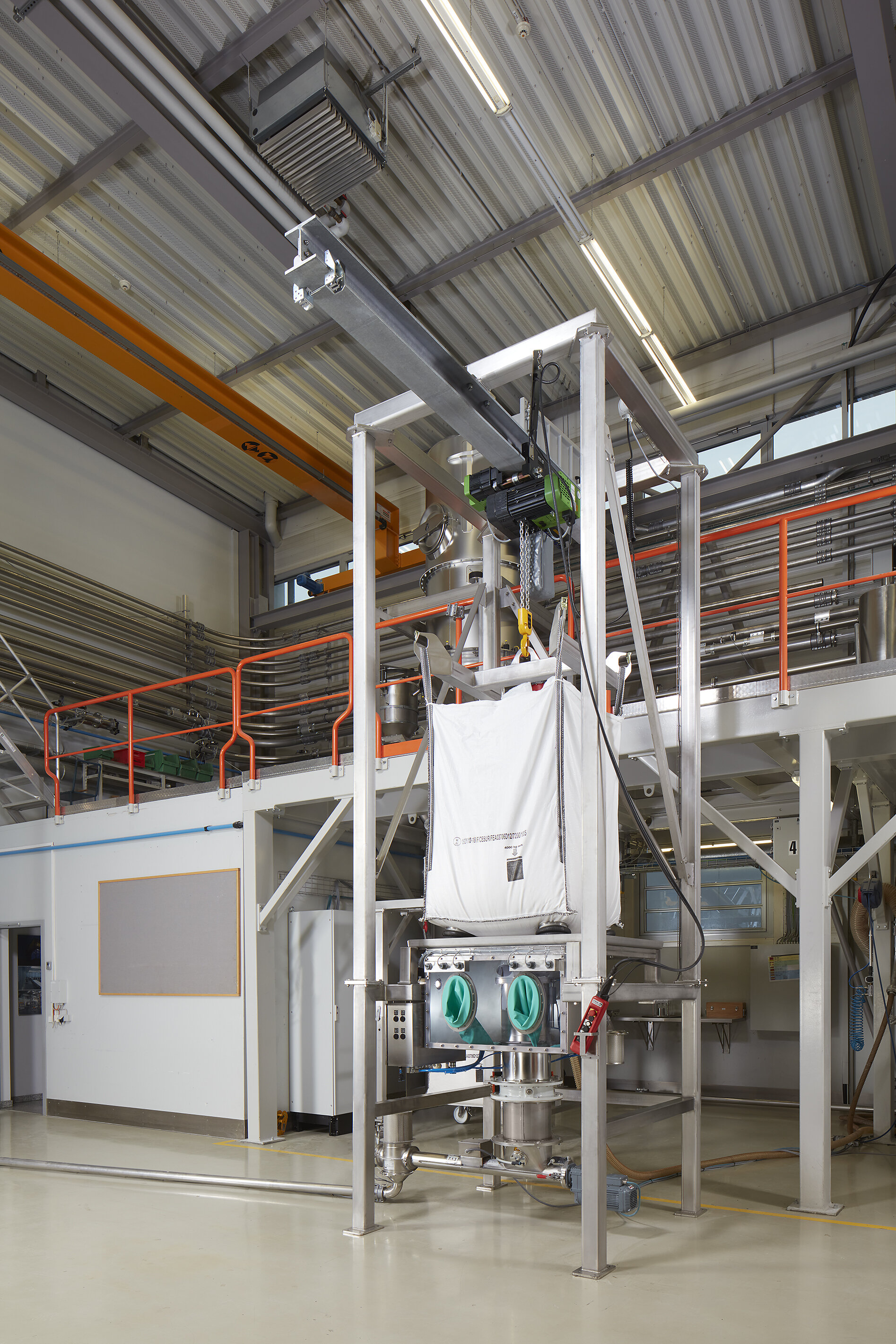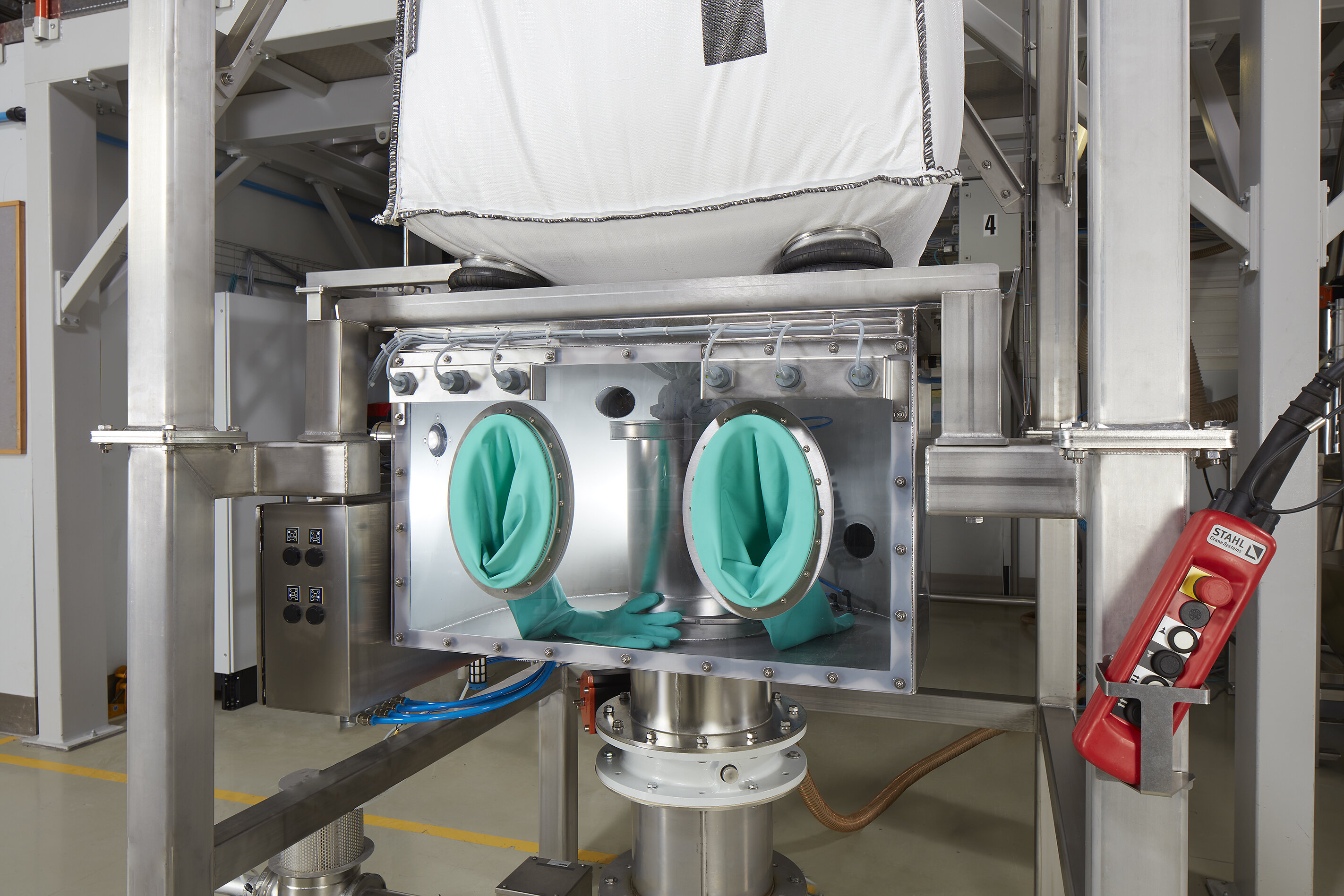
After its introduction more than 40 years ago, the big bag has become indispensable in industrial production. What began as a low-budget container for the simplest raw materials and debris is now increasingly being used for more sensitive raw materials. This means that with some bulk materials, the almost dust-free and safe emptying of the big bag can be extremely demanding due to their physical properties.
This process, formerly known as "dust-free emptying of big bags", is currently under a closer review. New legal requirements and guidelines as well as the use of raw materials that can be dangerous for the operator, also make this imperative. Especially in the field of additive manufacturing with metal powders or alternative drive technologies, such as in electromobility, manufacturing processes - which in the past were only carried out on a laboratory scale - have grown to industrial scale. This is where the container form, that was known as low-budget packaging in its early days, is now making its grand entrance: the big bag.
In the global trade of goods and raw materials, this all-purpose weapon of packaging technology is far from being standardized. There are special versions of the big bag emptying systems for many various applications. A separate lid for every pot. This often requires expensive special solutions for product discharge from the big bags, which are rarely efficient. Especially when several different versions need to be used in one production.
In order to be able to tackle the specific task in a targeted manner right from the start, you need a competent plant manufacturer at your side for automated and economical big bag emptying. And this is exactly where AZO comes in. The plant manufacturer from Osterburken can not only draw on over 70 years of experience in the automation of raw materials. In its in-house laboratory for raw material analysis, AZO can determine the physical properties of raw materials and collect them in a database. In the connected technical centre, tests can thus be carried out in advance to determine whether the customer-specific challenges are met.


Based on these experiences, examinations and tests, the new system for the almost dust-free emptying of AZO's big bags was developed, which does not require any special equipment on the big bag itself. The normal standard outlet of the big bag (possibly equipped with a liner or just a coated PP ribbon) can simply be docked at the interface to the bulk material system.
How does it works? To do this, consider the mechanical construction of this new device: the starting position is a docking nozzle with a movable docking ring and inflatable seal. This establishes the connection between the big bag and the emptying system. However, AZO's engineers have now additionally developed a housing with glove grip, which protects the environment and thus above all the operator from harmful effects of the critical raw materials.
This so-called glove box is of essential importance, especially for critical, toxic or potentially hazardous raw materials, such as those used in battery production.
A sophisticated suction system with pre-filter and HEPA 13 filter works closely with the housing to provide optimum protection for the operator. Once the big bag is securely connected to the system, emptying takes place under OEB 3 standard. The air volume remaining in the empty big bag, which still contains residual particles of the critical raw material, is evacuated directly after emptying. In this way, the empty volume is extremely reduced and dust leakage from the empty big bag is kept to a minimum. The necessary manual activities that have to be carried out with the help of gloves, as well as the connection and emptying processes, are combined with the new emptying system in the glovebox. But why go to all this effort?
It is well known that the operator of production facilities is responsible for their safety. This means that, especially when processing raw materials in powder form, compliance with the maximum occupational exposure limits (OEL) must be checked regularly and, if necessary, verified by measurement. In order to prove the suitability of the AZO emptying system for OEB 3, measurements of the particle concentration in the vicinity of the plant, but also directly in the operator's working area, were carried out during the development phase.

The particle concentrations measured in the development phase are used as standardized design criteria for new installations. Consequently, a new installation must always be designed and commissioned in partnership between the subsequent operator and the plant manufacturer in order to be able to comply with the necessary AGWs.
Since the legislator's requirements have become more and more stringent in recent years and thus follow the changed acceptance of impairments caused by pollutants, it is obvious that the regulations will also tend to become stricter in the future. The prospect of emptying big bags on an industrial scale in conjunction with the next higher containment level OEB4 (1 µg/m³ to 10µg/m³) will lead to more frequent container changes, especially with regard to the expected higher throughputs in the new industrial plants. This opens up many opportunities for more efficient and economical (partial) automation of big bag emptying processes. Nothing is more constant than change - especially when it comes to legal guidelines. In this context, AZO has its finger on the pulse of the times, recognizes tasks at an early stage and accordingly offers contemporary solutions for special tasks.